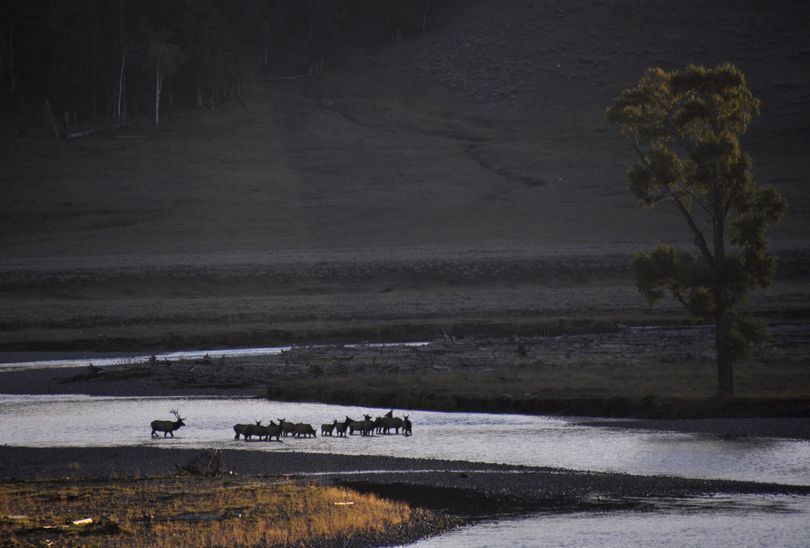Updated: Yellowstone elk increase as wolf numbers decline

Updated Feb. 5, noon, with info about corresponding decline of Yellowstone wolves.
WILDLIFE -- Wildlife officials have tallied a 24 percent increase in the size of an elk herd that migrates between Yellowstone National Park and Montana.
But they say it’s too soon to know if the change marks a turnaround for a population long in decline.
The 2015 winter survey of the Northern Yellowstone Elk Herd counted 4,844 elk. That’s almost 1,000 animals more than the last count in 2013 and the highest number since 2010.
Park biologist Doug Smith says a higher survival rate for newborn calves last year likely helped boost the population.
The well-known herd peaked at almost 20,000 animals in 1994, just before carnivorous gray wolves were reintroduced to Yellowstone in 1995.
Also taking a toll on the herd have been hunters, other predators and harsh winters.
Research has shown that the elk were overpopulated in the mid-90s and that the park's ecosystems, including aspens, have benefited to a more natural balance since wolves were reintroduced.
However, sportsmen's groups say a 75 percent decline in the area's elk herd is overkill.
Variable factors?
- Why are Yellowstone's elk disappearing? looks into different factors ranging from wolves to the illegal introduction of lake trout into Yellowstone Lake.
Wolf factor
The park's wolf population has dropped substantially since 2007. Park-wide, the number of wolves in Yellowstone declined from 171 in December 2007 to 82 in December 2012. Most of the decrease has been in packs on the northern range, where it has been attributed primarily to the decline in the elk population there. Disease, primarily distemper and possibly mange, have also been factors in the population decline. Wolves also have been killing each other in territorial contests.
Here's a Feb. 5 story with more details from the Associated Press:
By MATTHEW BROWN
BILLINGS, Mont. (AP) — Wildlife officials tallied a 24 percent population increase this winter for a well-known elk herd that migrates between Yellowstone National Park and Montana, but said it was too soon to know if the change marks a turnaround for a herd long in decline.
The 2015 winter survey of the Northern Yellowstone Elk Herd counted 4,844 elk. That’s almost 1,000 more animals than the last reliable count, in 2013, and the highest number since 2010.
A higher survival rate for newborn calves last year likely helped boost the population, according to biologists Doug Smith with Yellowstone and Karen Loveless with Montana Fish, Wildlife and Parks.
The herd, which is widely known among hunters and wildlife watchers, peaked at almost 20,000 animals in the early 1990s. That was soon before carnivorous gray wolves were reintroduced to Yellowstone, helping drive down elk numbers that also took a toll from heavy hunting, other predators and harsh winters.
State wildlife officials responded by first reducing and eventually eliminating in 2011 a late-season elk hunt near Gardiner that at one point issued permits for more than 1,000 elk annually.
Loveless said this winter’s jump in the herd’s numbers is not enough to immediately justify any additional hunting.
“I’d want to see at least a few years of population stability before we were to increase the (elk) harvest,” she said.
The 2015 winter survey counted more than 1,130 elk inside the park and more than 3,700 in adjacent areas of Montana.
Wolf numbers on the herd’s range have dropped by roughly half in recent years, from 94 to 42 of the predators. Park biologists said the decline suggests wolves could be beginning to respond to fewer elk.
A study is planned next winter to gauge the accuracy of the annual elk survey, Smith said. Participants will include researchers from the park, Montana Fish, Wildlife and Parks and the U.S. Geological Survey.
“Certainly the news is good. The numbers are up. Is it a true indication of a trend? I can’t say,” Smith said. “We want to know what’s going on with these elk. They are iconic in this region.”
Last year’s survey was not completed because of poor weather conditions.
